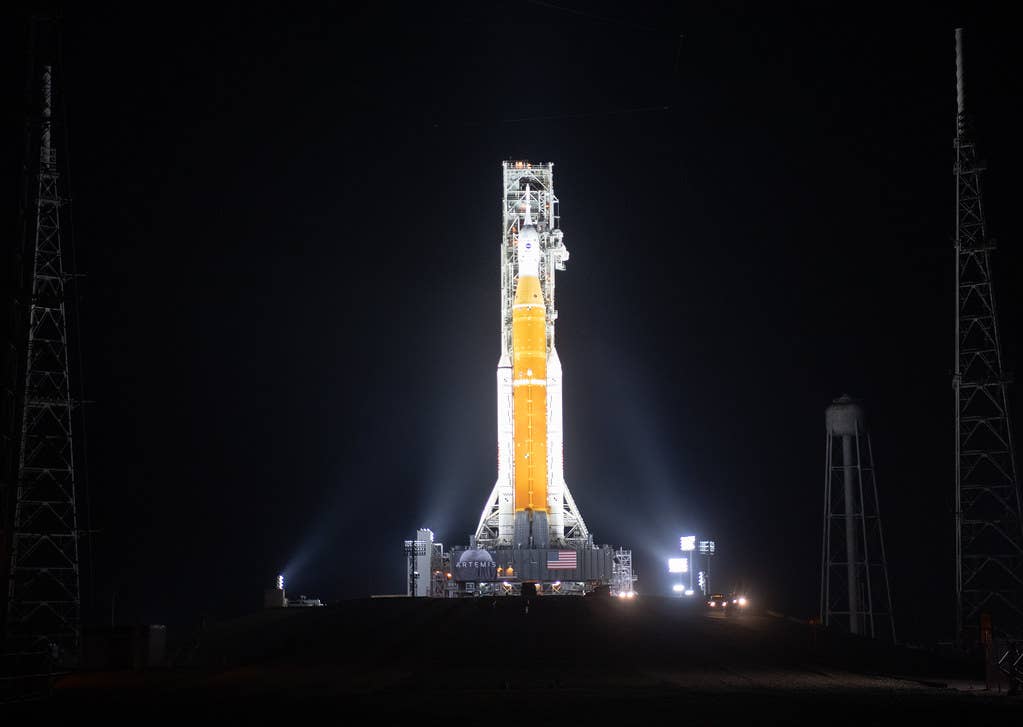Artemis I Moon Rocket Moves a Step Closer to Launch
NASA’s most powerful rocket, the Space Launch System (SLS) for Artemis I, has completed its fuel testing campaign and will now begin its final weeks of preparations before launch, mission officials said Friday.

NASA’s Artemis I Space Launch System (SLS) rocket with the Orion spacecraft aboard is seen illuminated by spotlights atop a mobile launcher. [Courtesy: NASA]
NASA’s most powerful rocket, the Space Launch System (SLS) for Artemis I, has completed its fuel testing campaign and will now begin its final weeks of preparations before launch, mission officials said Friday.
Next, the 322-foot tall rocket will be rolled from launch pad 39B back to NASA’s Vehicle Assembly Building (VAB) at Florida’s Kennedy Space Center, where engineers will remediate minor issues found during the wet dress rehearsal on June 20. There, the SLS will remain for up to eight weeks before its first launch window in late August.
It’s all part of the first launch of NASA’s Artemis Program, aimed at sending the first woman and person of color to the moon’s surface. This first mission, Artemis I, will be an uncrewed journey around the moon and back to Earth.
"During the wet dress rehearsal activities, we have incrementally added to our knowledge about how the rocket and the ground systems work together, and our teams have become proficient in launch procedures across multiple sites,” said Tom Whitmeyer, NASA’s deputy associate administrator for common exploration systems. “We have completed the rehearsal phase, and everything we've learned will help improve our ability to lift off during the target launch window. The team is now ready to take the next step and prepare for launch.”
- READ MORE: What is the World’s Most Powerful Rocket?
During Monday’s wet dress rehearsal, the ground teams simulated launch day activities down to just 10 seconds before liftoff. Previous attempts were cut short following a multitude of problems, including temperature limit issues, faulty core stage valves, and propellant leaks.
According to NASA, the rocket’s most recent issue involved a hydrogen leak at the connection point between an umbilical cord, stretching from the tail service mast and the rocket’s core stage. Engineers will inspect and likely repair the cord once the SLS returns to the VAB. During the last rehearsal, launch controllers “masked the data associated with the leak” to accomplish other objectives.
"The team continues to impress me with their creative thinking and resourcefulness,” said Charlie Blackwell-Thompson, Artemis launch director. “Our Artemis launch team has worked quickly to adapt to the dynamics of propellant loading operations. With each milestone and each test, we are another step closer to launch."
NASA now aims to return the SLS to the launch pad in late August, and will set a target launch date after “replacing hardware associated with the leak.” Stick with FLYING for updates on our return to the moon.

Sign-up for newsletters & special offers!
Get the latest FLYING stories & special offers delivered directly to your inbox






